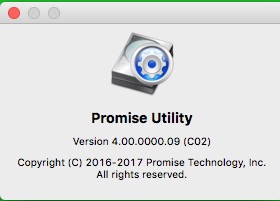

When Time Machine then tried to run its next backup, it couldn’t find the backup folder, and just hung, reporting In the automatic restart after the first panic, the Pegasus RAID array was left in a crippled state, as if erased. What seems to have led to the kernel panic was waking from sleep, which unmasked a bug/conflict in version 6.2.9 which hasn’t reared its head during normal use. So now it’s time to reconstruct what had happened, on the evidence available. Stackshot Reason: Wake transition timed out after 180 seconds while calling power state change callbacks. I checked that I was running the latest version (6.2.9), finding none more recent. They pointed the finger at the kernel extension, which provides support for my old Pegasus R4 RAID. While that was going on, I recovered the crash reports for the two kernel panics from /Library/Logs/DiagnosticReports/ProxiedDevice-Bridge, where they had been moved into the Retired folder as I had opted to send both to Apple. It eventually reported that it too was fine. I then set Disk Utility running First Aid on the RAID volume, to ensure that its HFS+ file system hadn’t been damaged. Once fully available, its backup folder Backups.backupdb appeared intact and just as I had left it earlier in the day. I had to shut the Pegasus down using its Power button, leave it a few seconds, and start it up again to get it to mount. It didn’t, but at least I could now sort that out while I continued with my work. I now knew that my Mac and its two SSDs seemed healthy, so it was time to restart in normal mode, and see if it would mount my external RAID. Strangely, given that it is 70% used so those snapshots should have been significantly larger, each took only a few seconds to check. The startup disk was fine, so I then checked my 1 TB external SSD, dreading to think how long verifying its eighteen snapshots would take. Although that is good First Aid, and potentially very important, it meant that checking my 1 TB internal SSD, which is only half full, took well over half an hour. It brought a surprise: when running First Aid, every one of the eighteen snapshots on my startup volume was checked, very slowly indeed. This is the first time that I have run First Aid in Disk Utility from Recovery Mode on an APFS boot disk which has been making hourly snapshots as part of Time Machine backups. I declined those, and restarted into Recovery Mode (Command-R) to run Disk Utility on each available drive. Just over four minutes later, it reported that my hardware was healthy, and offered to check out my available support options. On the iMac Pro, diagnostics is surprisingly bare-boned, just a little progress bar and terse text display. I connected my wireless keyboard and trackpad using the charging leads and decided to start up in hardware diagnostics, holding the D key. That looked like (and was) two kernel panics in quick succession. All I could do was to force shutdown using the Power button. It was then that my Mac hung, trying to restart. I decided to restart, and see if it mounted properly again and might kickstart the next backup. That came as something of a shock: viewed in the Finder, my backup folder had vanished. My next stop was to look at the backup folder, on my old Promise Pegasus R4 RAID array. It got stuck in what appeared to be an endless backup. When it had restarted, everything looked and worked fine apart from Time Machine. Unfortunately, macOS doesn’t give any indication that a Mac is merely rebooting after a severe kernel panic: you just have to wait and hope that the Apple logo will reappear.

#PROMISE PEGASUS R4 MAC SIERRA PRO#
Only ten days old, my iMac Pro could have suffered a severe hardware failure, and effectively be dead. There are several things that a suddenly black display can indicate. I was just replying to one when its display went ominously black. I got home, woke it up, and started working through recent tweets. My Mac had spent much of the afternoon asleep. If you back up using Time Machine in High Sierra or Mojave, the next time you run First Aid on your boot volume in Recovery Mode, be prepared for a very long wait. Not only do I think I know why, but in dealing with them some interesting changes have come to light. My iMac Pro running Mojave 10.14.1 just had two kernel panics, the first resulting in an auto-restart, the second freezing shutdown.


 0 kommentar(er)
0 kommentar(er)
